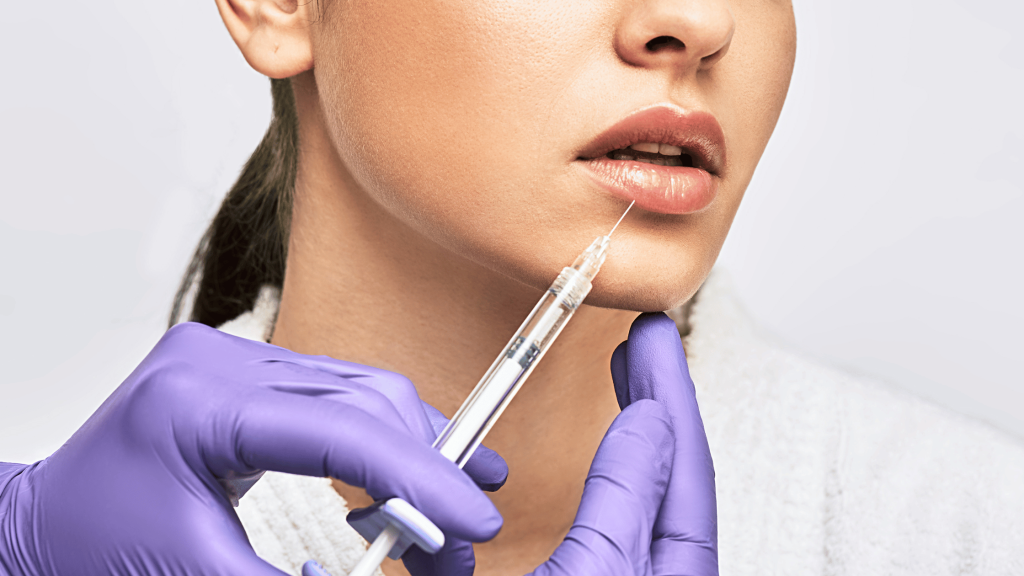
With the growing popularity of dermal fillers in the UK as a solution for enhancing facial features and combating the signs of ageing, it’s crucial to understand how to identify potential issues with your filler treatment. In this Faces blog, we’ll delve into common problems to be aware of and what steps to take if you suspect your filler treatment is of poor quality.
Prolonged Swelling and Redness
While some inflammation and redness are to be expected following a dermal filler treatment, if you experience excessive swelling that lasts more than a few days or worsens over time, this could indicate a poor-quality filler treatment. In some instances, significant swelling and redness might signal an infection or an allergic reaction to the filler material.
Persistent Lumps and Bumps
It’s not uncommon to feel small lumps or bumps under the skin immediately after treatment, but these should subside within a week as the filler settles. If you observe lasting lumps or bumps that don’t disappear on their own, this might be a sign of a poor-quality filler treatment. Such lumps could result from improper injection technique, overfilling, or the use of substandard filler material.
Unevenness and Inconsistencies
The primary objective of dermal filler treatments is to achieve a harmonious and symmetrical appearance. If you notice any unevenness or inconsistencies in the treated areas, this might suggest that the filler has been poorly distributed or injected into the incorrect area. A proficient practitioner should be able to produce a natural-looking result that accentuates your facial features without causing noticeable distortions.
Bruising or Skin Discolouration
Some bruising is expected after dermal filler treatments, particularly if the injections are performed in sensitive areas like the lips or around the eyes. However, if the bruising is severe or does not fade within a week or two, this could indicate a poor-quality filler treatment. Additionally, if you notice any skin discolouration, such as a bluish or greyish hue, this might be a sign of vascular occlusion, a rare but serious complication that necessitates immediate medical attention.
Severe Pain and Discomfort
Mild discomfort is normal during and immediately after a dermal filler treatment, but severe pain or extended discomfort could be indicative of a poor-quality filler treatment. Pain might signal an infection, an allergic reaction, or the filler being injected too close to a nerve or other sensitive structures.

What to Do if You Suspect a Poor-Quality Filler Treatment
If you’re experiencing any of the red flags mentioned above, it’s vital to consult a qualified medical professional as soon as possible. They can assess your symptoms, determine the underlying issue, and recommend the appropriate treatment.
In some cases, corrective measures might be necessary, such as dissolving the filler using an enzyme called hyaluronidase (for hyaluronic acid-based fillers) or surgically removing the filler material. If an infection is suspected, your doctor may prescribe antibiotics to help clear the infection.
Preventing Poor-Quality Filler Treatments
To reduce the risk of a poor-quality filler treatment, it’s essential to select a qualified and experienced practitioner. Ensure that you research their credentials, read reviews from previous clients, and ask to see before-and-after photos of their work.
It’s also important to have realistic expectations and discuss your desired outcome with your practitioner during your consultation. A competent practitioner will be able to guide you on the most appropriate treatment plan based on your unique needs and goals.
During your consultation, don’t hesitate to enquire about the filler products being used. High-quality fillers sourced from authentic and verified pharmacies, such as those made from hyaluronic acid, have a proven safety record and are widely used in the UK. Exercise caution with practitioners who use unknown or unbranded fillers, as these products may not have undergone stringent safety testing.
Proper aftercare is crucial to ensure the best possible outcome from your dermal filler treatment. Adhere to your practitioner’s aftercare instructions closely and avoid touching or applying pressure to the treated areas for at least 24 hours after the procedure. Keep the area clean and avoid exposing it to extreme heat or cold, as this can affect the filler’s longevity and increase the risk of complications.
In Conclusion
Dermal filler treatments can yield excellent results when performed by a skilled and experienced practitioner. By being aware of the red flags associated with poor-quality filler treatments, you can better protect yourself and ensure that you receive the best possible outcome from your procedure. If you suspect your filler treatment is of poor quality, seek medical advice immediately, and always opt for a reputable practitioner for your treatments.